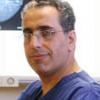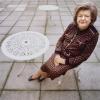The majority of lumps in the breast are benign, which means that they are not caused by cancer. This article outlines the different type of benign breast lump that can occur and explains whether any treatment is necessary.
Contents
- Fibroadenomas
- Breast cysts
- Breast abscesses
- Phyllodes tumours
- Lumps in the breast caused by fatty tissue
- Breast lumps in men
- Lumps in the breast that do need to be removed
- Conclusion
I've been told I have a benign breast lump. What should I do?
The short answer is: don’t worry! Benign lumps are not cancerous and usually can safely be left alone. However, as we will see, some benign lumps are not as benign as others and sometimes things that are not even lumps may need to be removed.
The two most common breast lumps that we see are fibroadenomas and breast cysts.
Fibroadenomas
Fibroadenomas tend to occur in younger women, up to the age of thirty, although we can see them at any age. They are often oval, smooth and easy to move around in the breast. Normal gland tissue in the breast has been likened to a scaled down packet of frozen peas, as it has a nodular feel to it. In the same way that sometimes frozen peas clump together to form a lump, so gland tissue in the breast can also clump. Fibroadenomas can be thought of as normal breast tissue, stuck together.
Fibroademoas are completely harmless although they can, sometimes, get quite large. In teenagers we occasionally see what is called a giant, or juvenile, fibroadenoma and these can actually get very big. Even though fibroadenomas are harmless if someone wants their lump removed then it can be done. Large fibroadenomas are usually best removed with an operation; some of the smaller ones can be removed with a technique called a vacuum assisted biopsy, which is done with local anaesthetic. Now, having said that fibroadenomas are harmless, remember that they are made of normal breast tissue. A breast cancer will initially start from normal breast tissue so that although there is no increased risk of breast cancer in women with fibroadenomas, the breast tissue within it can still turn cancerous. However, it is no more likely to do so than in any other area of the breast.
Breast cysts

Cysts tend to occur in women aged between forty and sixty, but again we see them at other ages too. They are fluid collections within the breast and are probably due to a combination of changing hormone levels and increased sensitivity of the breast tissue to those hormones. Cysts often come up quite quickly and it is common for them to appear, literally, overnight. They are often round in shape and can be a little bit tender too. Large cysts can be drained with a small needle to remove the fluid. Smaller cysts will often go away on their own, although they can cause a fair bit of discomfort in the breast. The fluid can vary in colour from pale yellow to dark brown or even greenish. As long as the fluid looks typical and the lump completely disappears there is not usually a reason to analyse the fluid. If it looks as if there may be an infection or the fluid looks in any way odd it will be sent off to be examined under the microscope. Now, as with fibroadenomas, cysts are harmless, although undoubtedly a nuisance, but there are exceptions. Cysts in older women (over 70 years) are less common and rarely may contain an early cancer in the wall of the cyst. If the fluid is blood stained or the cyst does not look typical on an ultrasound scan, further tests mat be needed.
A slightly different sort of cyst that occurs in women who are breast feeding is the galactocoele. This is quite simply a milk cyst and can easily be drained off. They have a habit of refilling but eventually settle down. It is best not to operate on these unless they are really troublesome.
Breast abscesses
Breast feeding women can also get an abscess in the breast. This is usually easy to diagnose. It is a hot, red, painful swelling. It is usually possible to avoid operating on breast feeding abscesses these days. They are treated by draining off the pus using local anaesthetic and a large needle. It may need to be done several times, often at weekly intervals, before it goes away but by avoiding surgery it means that the woman can stay at home and continue breast feeding, if she wants to.
Abscesses can also occur in women who are not breast feeding. We occasionally see them in young girls and the cause is unknown. There is also a condition called periductal mastitis, which is related to smoking that can also cause an abscess. In this case the abscess occurs in the ducts behind the nipple. The abscess is initially treated in the same way, by draining it with a needle, but it tends to be more troublesome and it can recur, particularly if the woman does not give up smoking. In some cases an operation may be required to remove the infected ducts and sometimes several operations are needed.
Phyllodes tumours
Another lump that we sometimes see is the phyllodes tumour (tumour just means lump). These feel very similar to fibroadenomas but tend to occur in slightly older women. They are more active than fibroadenomas and have a tendency to come back if they are not completely removed. Some of them (a small number) are actually considered to be cancerous and it can be difficult to tell without examining the whole lump. For this reason if there is any suspicion that a lump may be a phyllodes tumour then it is usually removed with a rim of normal breast tissue around it (an operation called a wide local excision). Even though the majority will be harmless it is quite common to follow up women who have had phyllodes tumours removed. The phyllodes tumour is a good example of a benign lump that may not always be benign.
Adenomas of the breast are also benign lumps. They tend to occur just underneath the nipple and feel smooth and round, like fibroadenomas, but are not moveable. It can be difficult to be absolutely sure that a lump is definitely a benign adenoma and so they are often removed.
Lumps in the breast caused by fatty tissue
A definitely benign lump is a lipoma. This is a collection of fatty tissue. It has nothing to do with being overweight and we see them in all types of people. They can occur anywhere in the body where there is fatty tissue under the skin (so not the palms of the hands or the soles of the feet). They usually have a very typical feel to them and are straightforward to diagnose. Small ones are often left alone. Larger ones can be removed, often with local anaesthetic as they are just under the skin.
Another condition of the fat under the skin is called fat necrosis. This occurs after an injury to the breast and is nearly always associated with significant bruising. We see this after a fall or a seat belt injury in a car crash. As the bruising settles the fat under the skin can go quite hard and cause a definite lump and can feel just like a breast cancer. The clue is in the amount of bruising that was previously present. Sometimes a woman will bang her breast and then become aware of a lump that was there before but hadn’t been noticed. In these cases there usually hasn’t been much or any bruising. Fat necrosis can be safely left alone, but it may take many months or even years to settle.
A hamartoma is an interesting but completely benign lump. They are often quite soft and feel like normal breast tissue, because that is what they are! They are thought to be normal breast tissue growing in a disorganised way. They are not cancerous and grow at the same rate as the breast. They do not need to be removed unless the diagnosis is in doubt or they are very big.
Breast lumps in men
Of course we mustn’t forget the men! Men can actually get nearly all of the conditions that women do, but much less often. A benign lump we see fairly regularly in men is called gynaecomastia. This tends to occur if there is a mild hormone imbalance and will often settle by itself. It is common in teenagers, when the hormones fluctuate, and also in older men as the hormone levels fall. It can also occur as a side effect of many tablets, for example indigestion remedies and many tablets for the heart and blood pressure. Too much alcohol is a well known cause. It is fairly easy to diagnose as it causes a rubbery firm disc of tissue behind the nipple. It is often initially quite tender, then the tenderness settles but it stays lumpy and then it goes down. As it nearly always goes away by itself it is best left alone, but if it gets very big, or very painful, it can be removed. It can take a year or so to settle.
Another painful “lump” is known as Mondor’s Condition. This is an inflammation of one of the veins just under the skin of the breast (a thrombophlebitis). It is a tender cord running along the breast and it may be slightly red. This will always get better by itself and, apart from pain killers or anti-inflammatories, no treatment id needed.
Lumps in the breasts that do need to be removed
Finally I want to consider some things that are (probably!) not cancerous and may not even be lumps, but will often need removing. These are things that are usually picked up on a mammogram and may be found purely by chance or unexpectedly when a benign lump is removed. An important thing to consider here is what actually a cancer is. There are many definitions, but one I find useful is that a cancer has the potential to spread to other parts of the body (called a metastasis). It may not have done so but it has that capability. The things I want to consider are some of the so called pre-cancerous lesions.
There are several of these and whilst some are “nearly cancer” some are quite a long way down the ladder of pre-cancerous change and are better considered as representing the early stages of instability in the breast.
Atypical hyperplasia is a description of slightly abnormal cells that a pathologist may see down a microscope. It is probably the bottom rung of instability in the breast. It is not, in itself, dangerous but can sometimes lie next to an area of more advanced pre-cancerous change, or even an early cancer. For this reason areas of atypical hyperplasia are often removed.
Similarly there are conditions called sclerosing adenosis and radial scars. Although these can sometimes turn up as lumps they are usually found as areas of change on a routine mammogram. They seem to be further up the ladder and nearer to a cancer and so are also usually removed. Indeed some radial scars will have definite pre-cancerous change in them, a condition called ductal carcinoma in situ (DCIS).
DCIS seems to be as close as you can get to proper cancer, but it does not have the important ability of being able to spread. It can form a lump but it usually shows up on a mammogram as tiny white specks, much like grains of salt and this is called microcalcification. There are other forms of microcalcification and most are harmless. DCIS comes in three types: low medium and high grade depending on how abnormal it is. High grade DCIS is very nearly cancer and would probably develop into proper cancer within a few years. So, if high grade DCIS is removed we are preventing someone from getting the breast cancer they would otherwise have developed. Medium grade DCIS may take a lot longer to develop into cancer and low grade DCIS may never get that far, but we are not sure. If DCIS is found, it will usually be removed.
Similar to DCIS is a condition called lobular carcinoma in situ (LCIS). This may also develop into cancer but will take perhaps 20–30 years to do it. LCIS is therefore more often thought of as a sign of increased risk of developing cancer in the future. It may not have to be completely removed, like high grade DCIS, but women will need to be monitored with regular mammograms.
Conclusion
So, what should you do with a benign breast lump? Well, nothing, unless you want to, but you have to be absolutely sure it is benign and, as you have seen, that is not always straightforward.








